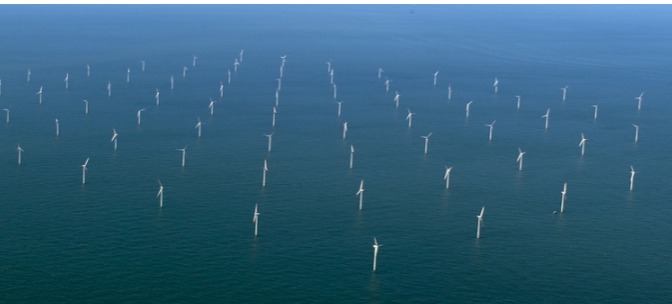Certification and standards body DNV GL has launched a new joint industry project (JIP) with 14 global partners to mutually develop a recommended practice for the coupled analysis of floating offshore wind turbines, effectively reaching a unified standard for the industry.
DNV GL finds that although the wind industry has a strong focus on developing floating offshore turbines, it is still missing a widely accepted approach for the practical methods to build and validate the numerical models in accordance with the requirements in the standards.
Guidance includes setting up minimum requirements for the design of new concepts that can help investors’ evaluation and supporting the more mature technologies toward a safe and secure commercialization.
According to DNV GL, the participants come from a broad range of industries, including utilities, component manufacturing, engineering consultants, maritime research institutes, shipyards and academic research. The following companies are contributing to the development of the new recommended practice:
- Ramboll;
- Ideol;
- EDF;
- MARIN;
- STX Solutions Europe;
- Esteyco;
- NAUTILUS Floating Solutions;
- Dr. Techn. Olav Olsen;
- National Renewable Energy Laboratory;
- GICON;
- Glosten;
- Atkins; and
- MARINTEK.
Ideol’s CEO Paul de la Guérivière comments, “We have been convinced for a long time of the benefits of a common framework for the loads analysis of floating wind turbines and are confident that such efforts will lead to substantial gains in efficiency and cost. The recommended practice should strongly help the floating offshore wind industry and accelerate the development of commercial-scale floating wind farms.”
DNV GL states that the new recommended practice will build on the experience from the application of the Offshore Standard DNV-OS-J103 “Design of Floating Wind Turbine Structures,” which was published in 2013, and will contain methods and ways to fulfill the requirements set in DNV-OS-J103.
The company asserts that this new joint approach, based on the latest knowledge and practical know-how, will greatly reduce the risk of inadequate analysis, leading to substantial time-savings. Further advantages stem from the focus on the design of floating turbines and the validation of numerical models with respect to their subsequent certification. The coherent structure of the recommended practice also provides a unified cost structure for the project development process.
“The analysis of floating wind turbines is a complex challenge that requires the integration of different technologies and disciplines,” says Luca Vita, project manager of the JIP and senior engineer at DNV GL – Energy, Renewables Certification. “The lack of a common agreement on the optimal approach to conduct these analyses during the different stages of the design process adds potential risk factors and time delays in the project development, but also in the cost evaluation of new conceptual designs.
“This project provides a unique platform to mutually develop an invaluable recommended practice [that] will be beneficial to each industry stakeholder, taking the wide-ranging spectrum of interdisciplinary skills and business objectives of each participant into account,” Vita adds.




